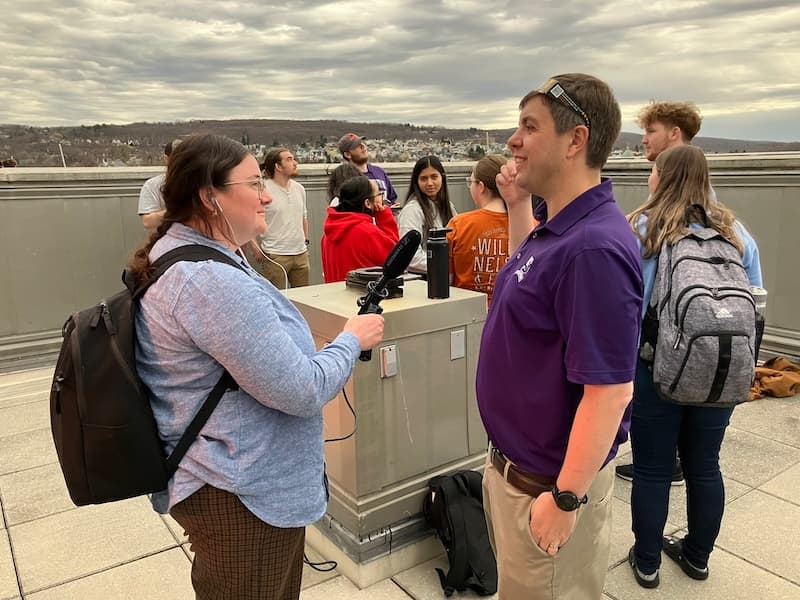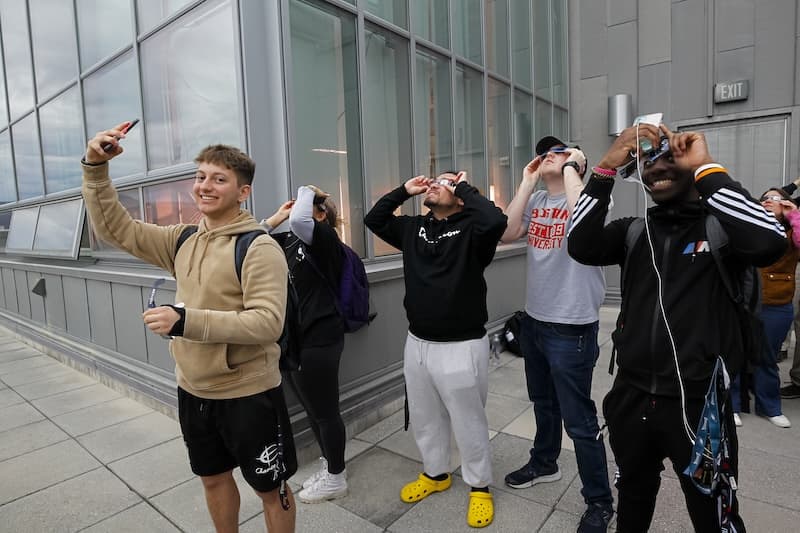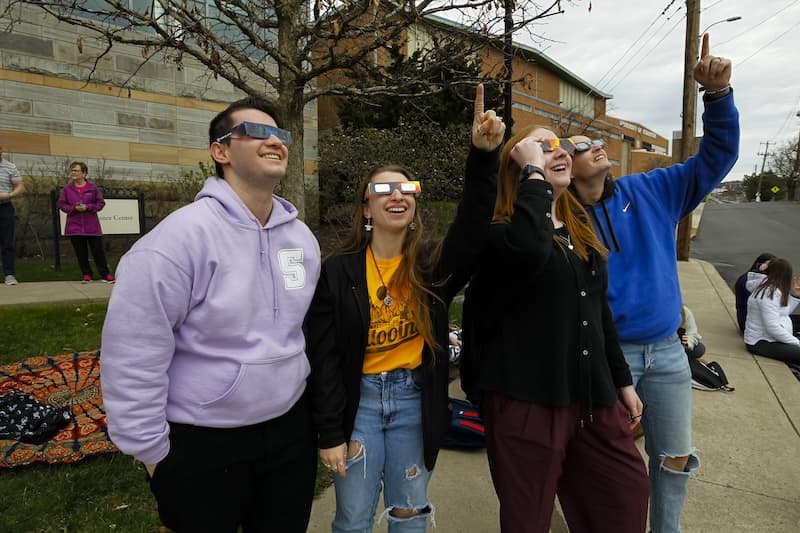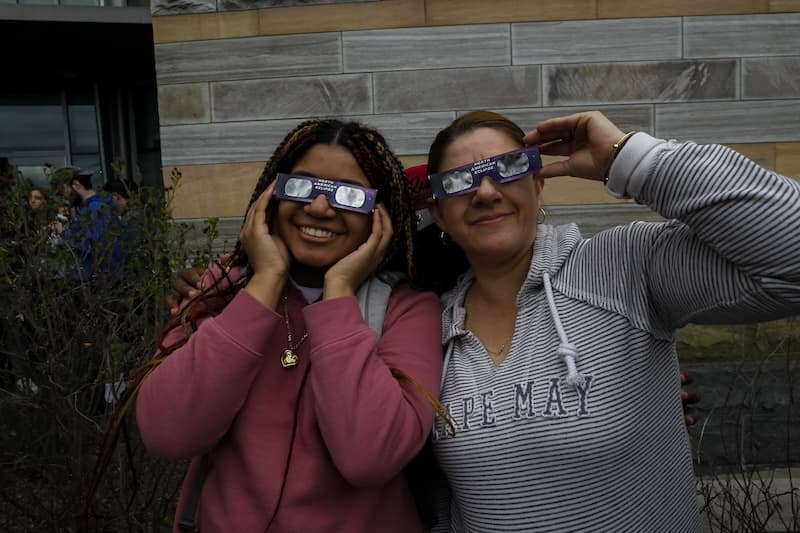Scranton Professor Leads NASA-Selected Eclipse Study

In a glass-walled, fifth floor ham-radio studio at The University of Scranton, a team of students led by a physics faculty member researched changes in the Earth’s Ionosphere during the total solar eclipse on April 8.
NASA, the National Science Foundation (NSF), and other grants awarded to Nathaniel Frissell, Ph.D., assistant professor physics and engineering at The University of Scranton, have supported the development of a international network of ham radio operators to collect and monitor changes in the ionosphere. In the fall of 2023, the University installed state-of-the-art ham radio equipment and antennas on the roof of The Loyola Science Center, supported by an Amateur Radio Digital Communications (ARDC) grant awarded to Dr. Frissell.
Dr. Frissell’s project for Ham radio operators to collect transmission data during the eclipse, coined the HamSCI Solar Eclipse QSO party, was one of just five projects selected by NASA for the study of the total solar eclipse.
As the students viewed the eclipse from the fifth floor of the Loyola Science Center, they used the ham radios in the studio to connect with a network of ham radio operators in order to collect data of changes in the Earth’s electrically charged upper atmosphere that occur during the eclipse.
The project was covered in news broadcasts by the BBC globally, as well as by national news outlets in the United States, including USA Today, NASA Science, Scientific American, Science News Explores and Newsmax TV. University student Tom Pisano, an electrical engineering major from Staten Island, New York, was interviewed in a BBC article that was picked up at publications in Saudi Arabia and Kenya.
Also on April 8, the University’s Astronomy Club and the Department of Physics and Engineering hosted a presentation on eclipse by Dr. Frissell and University student Simal Sami, a NASA Partner Eclipse Ambassador. Sami is a senior information technology major at Scranton from Jessup. They also hosted an Eclipse Viewing for students, faculty and staff, complete with eclipse glasses and solar telescopes.






















